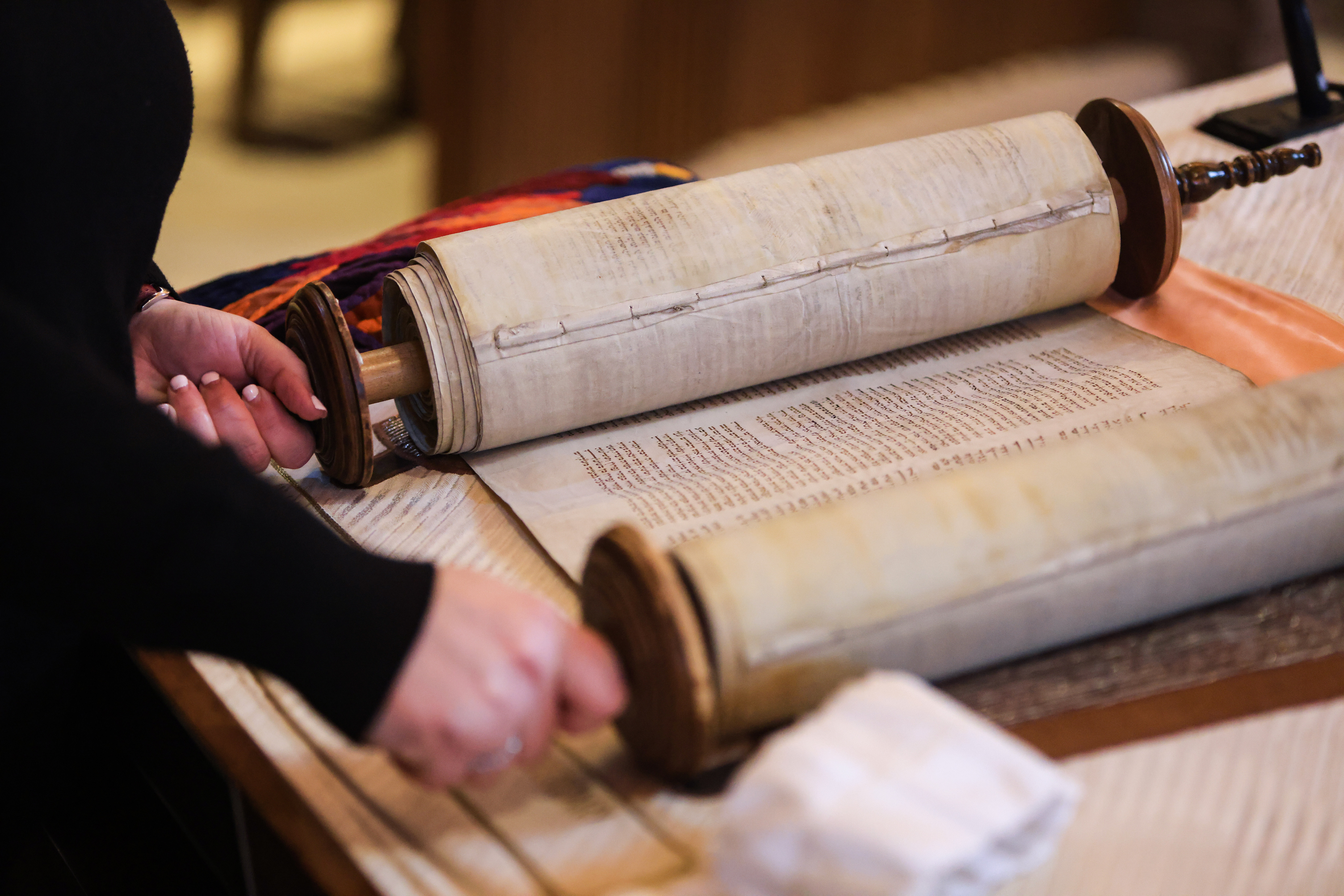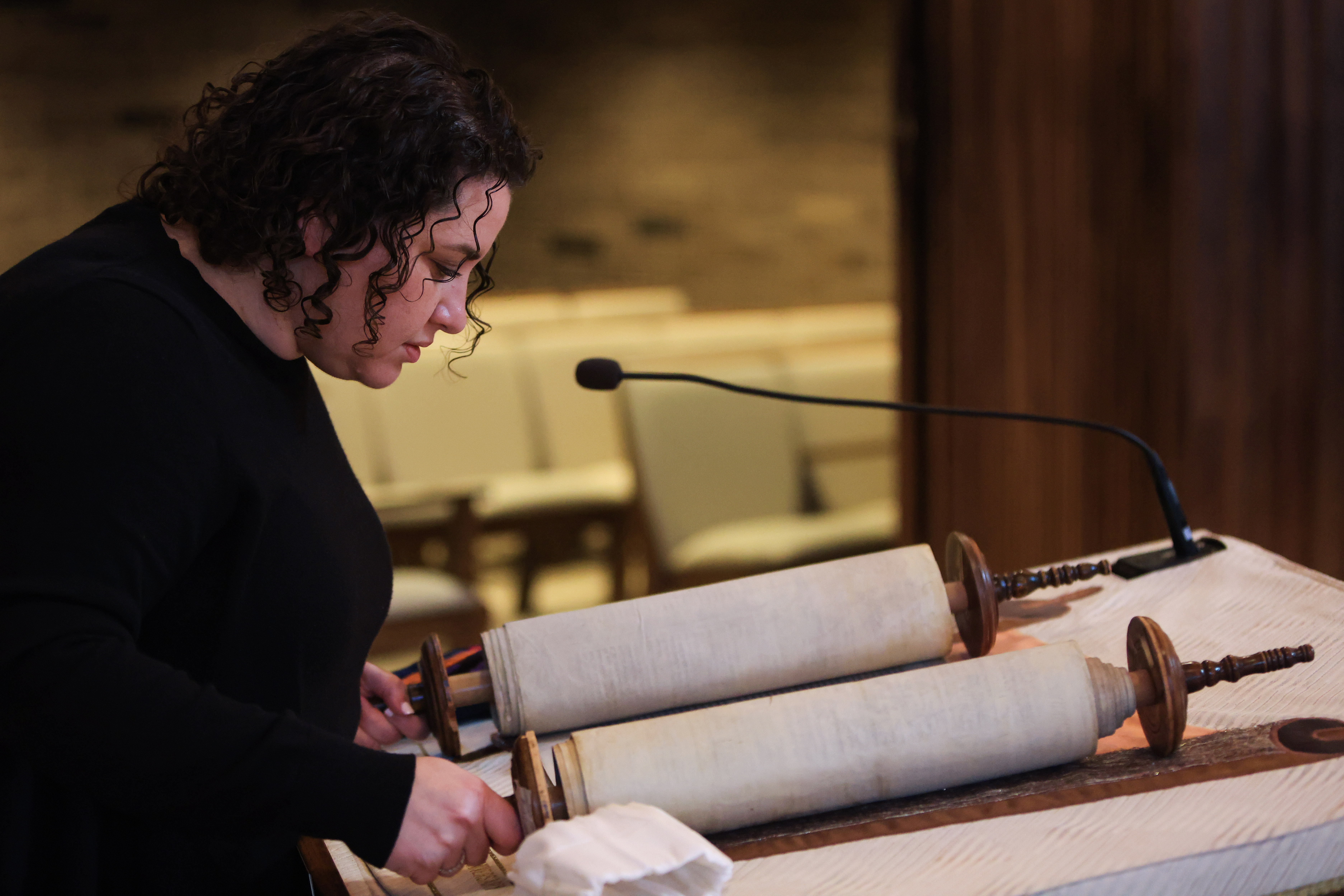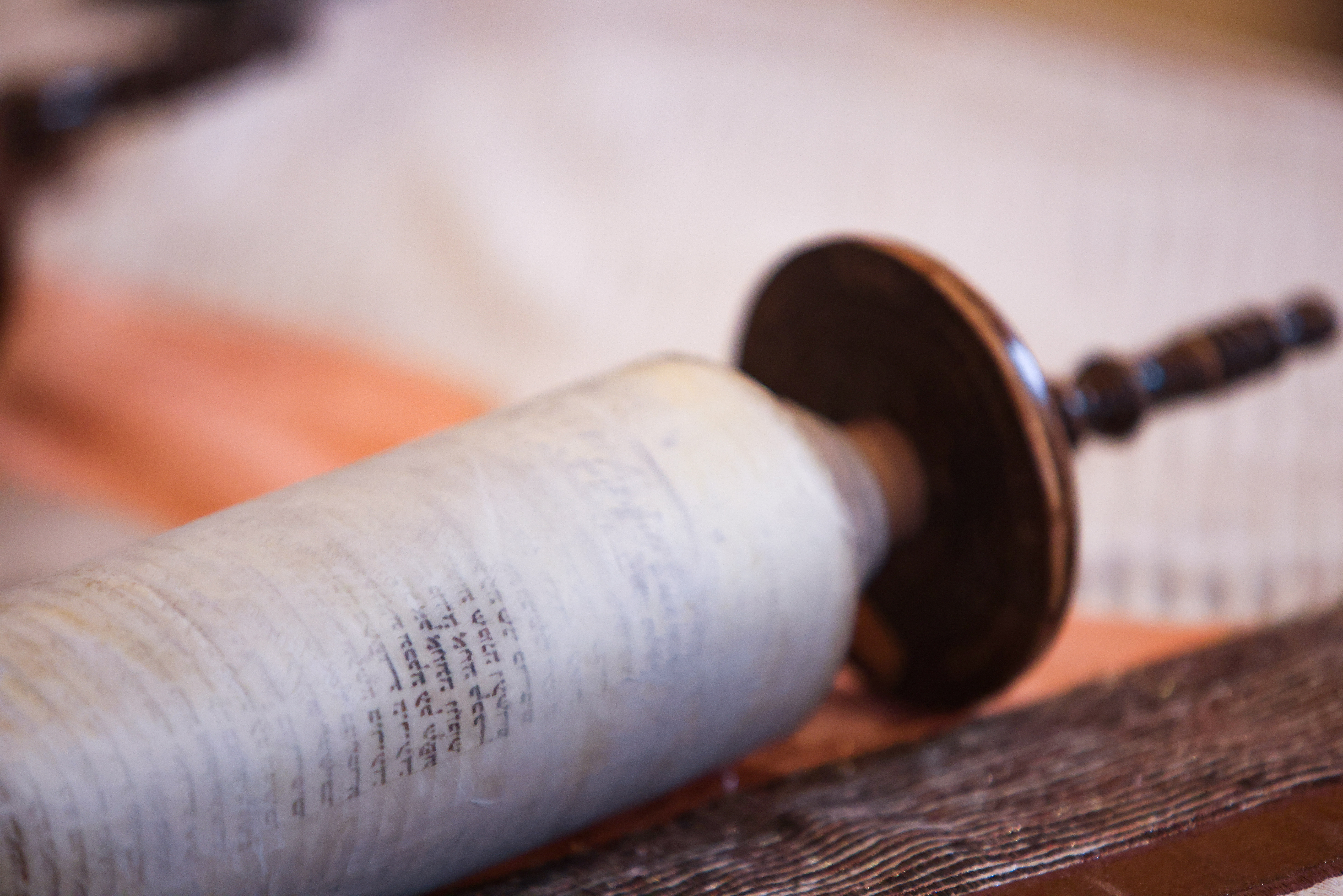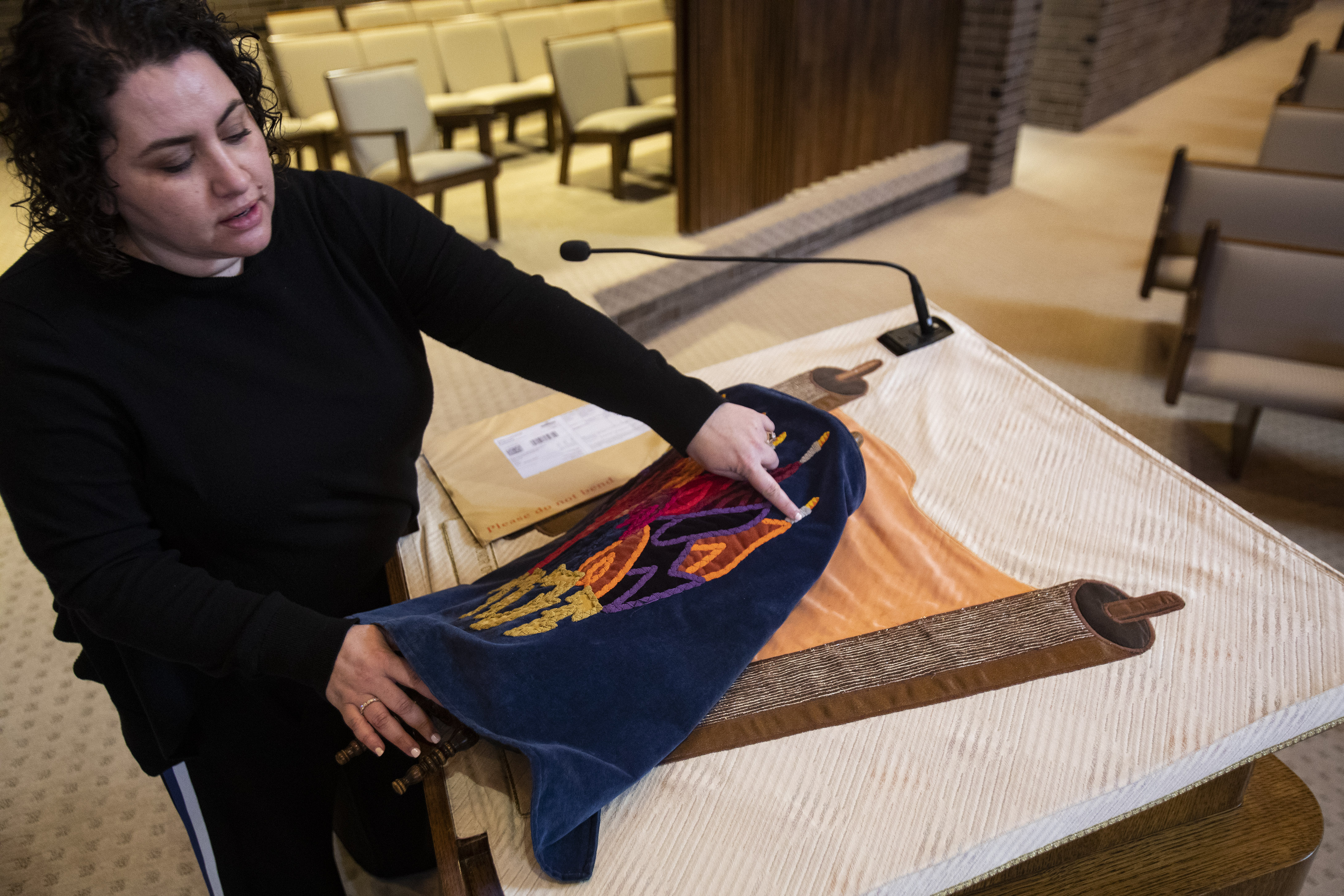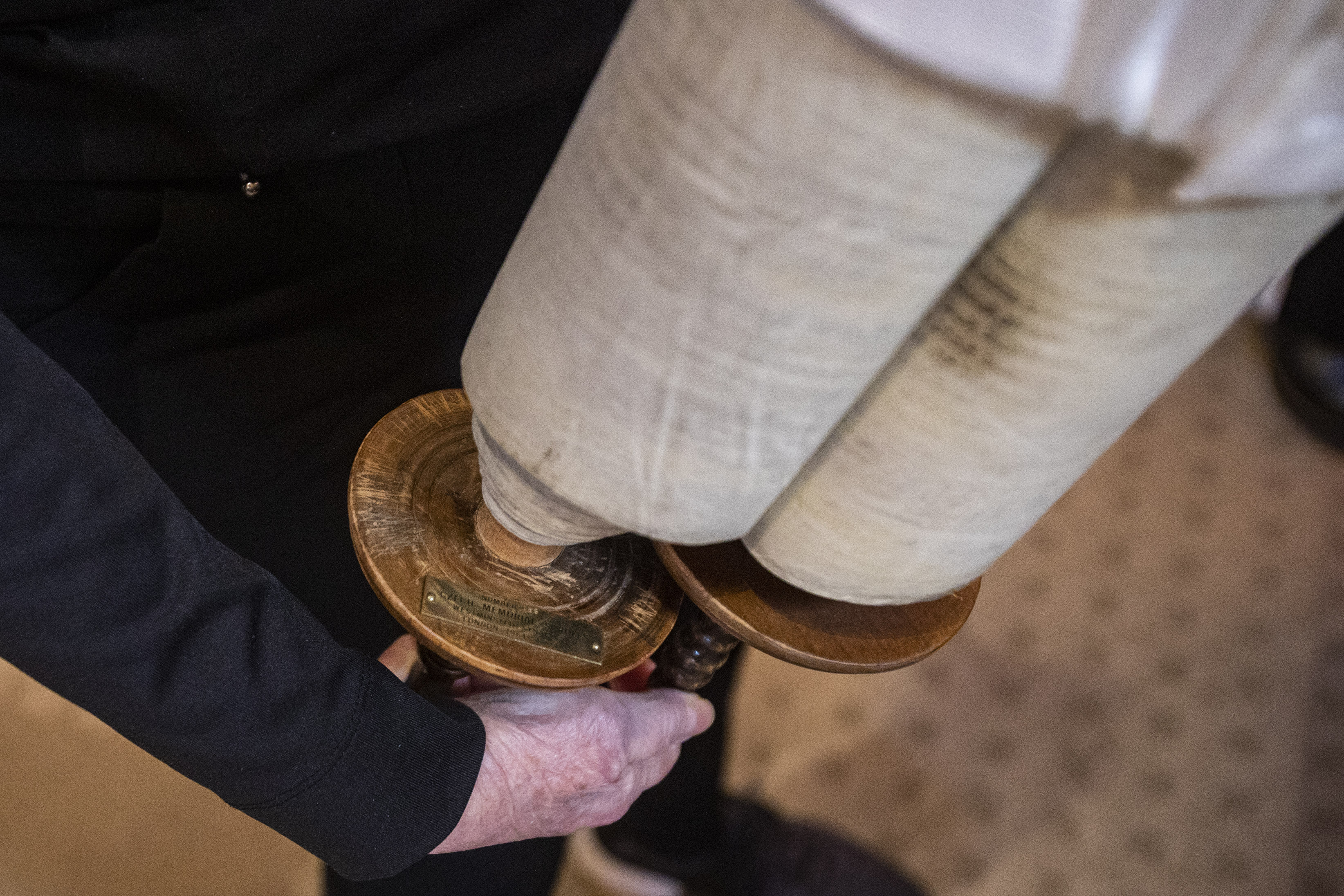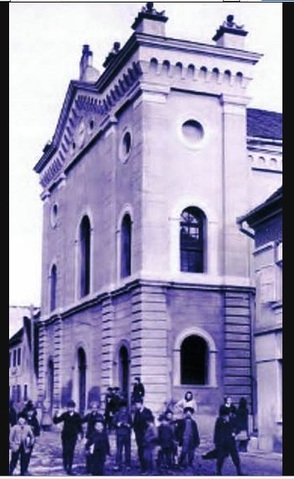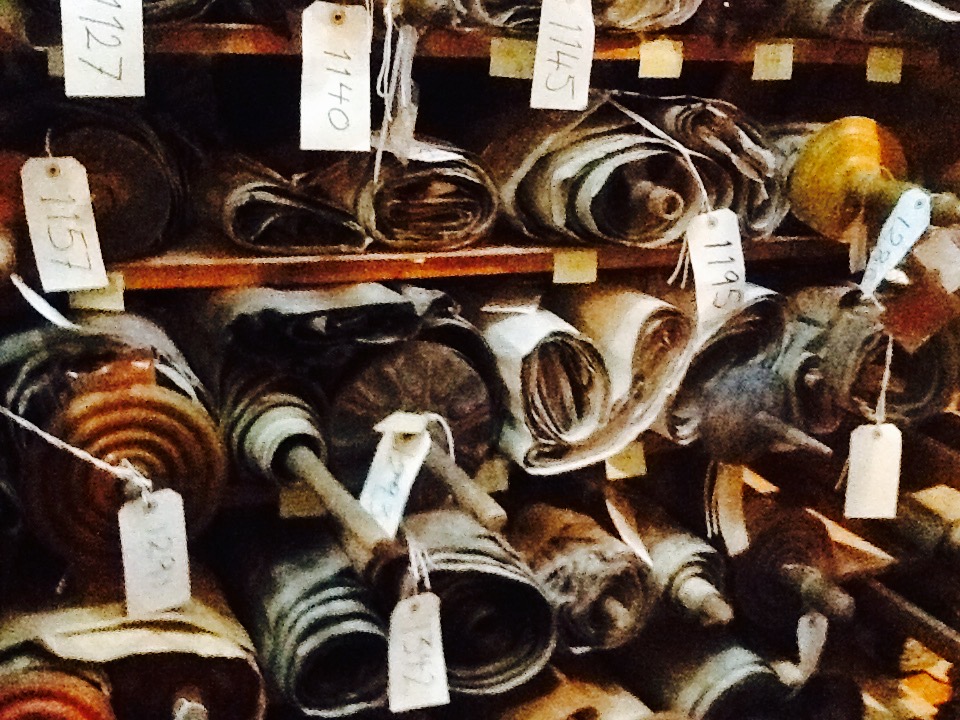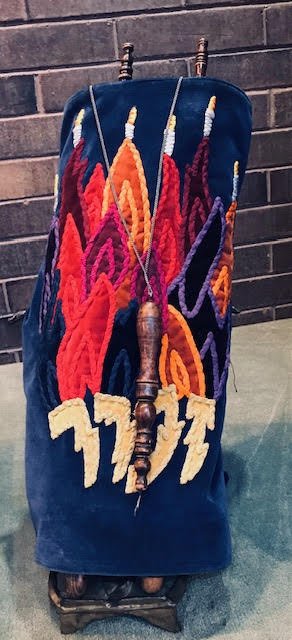
Keeping the flame burning
For 50 years, Sylvania’s Temple Shomer Emunim, which translates to “Guardian of the Faith,” has guarded a Holocaust survivor — a mid-19th century Torah scroll from Central Europe.
It’s one of the 1,564 Czech Memorial Scrolls, which were stored in a synagogue near Prague during the Holocaust and were rescued from communist Czechoslovakia in 1964.
“There is no other collection like this,” said Beverly Karp, an American volunteer researcher for the Memorial Scrolls Trust and historian of Scroll 186 at Temple Shomer Emunim.
“They are pretty much our Holocaust survivors now. There are just a few people left,” she continued. “They’re not just an object that survived it like some other things [which] are important, but nothing else is like the scrolls.”
The Torah is seen as just as valuable as a person, and Jews will risk their lives to save a scroll. The Torah contains the first five books of the Hebrew Bible and is always handwritten in Hebrew on animal-skin parchment by a trained sofer, or scribe.
Scroll 186 was the 186th scroll to be unwrapped on Feb. 7, 1964, when the collection arrived at Westminster Synagogue in London. The synagogue is home to the Memorial Scrolls Trust, which works to preserve the history of the Jewish communities that once used these scrolls. It also loans scrolls to synagogues and other institutions across the world. More than 1,000 are in North America, and Czech scrolls are on loan on every continent except Antarctica. More than 50 are located in Ohio and Michigan, Karp said.
Rabbi Lisa Delson of Temple Shomer Emunim said serving as guardian of a Czech scroll “is a way that we are guarding the past and transmitting our tradition to the future.”
Karp added, “You literally are holding, you’re protecting, you’re being faithful not only in your current life but also to those past generations. You’re now protecting, too, that Holocaust survivor.”
Scroll 186
Karp’s 21 years of research on Czech scrolls at several synagogues has helped her learn about the communities and families where the Torahs were part of flourishing Jewish life in parts of Bohemia and Moravia.
Scroll 186 came from a Jewish community in Bucovice, a town in the Moravian region of what is now the Czech Republic, she said after returning from celebrations in London for the 60th anniversary of the scrolls arriving to Westminster Synagogue.
“I find it emotional when I touch this scroll,” Karp said. “I react differently to that scroll than I do our other ones because it’s carrying so much history and I know so much of the history connected to that and the surrounding towns.”
The mantle, or cover, made specifically for this scroll, depicts six burning candles, which represent the 6 million Jews who died in the Holocaust. Beneath it, Hebrew letters spell “zachor,” which means “remember.”
“We light six candles on Yom Hashoah, Holocaust Memorial Day,” Rabbi Delson explained. “We always light candles in memorial for people when it’s the anniversary of their death.”
Some damage to Scroll 186 leaves it no longer in regular use, but the congregation continues to house it in the ark where all its Torahs are kept. Rabbi Delson said the Torah is, however, used in bar and bat mitzvahs and the people of Bucovice are remembered in those services.
“We talk about the scroll, we talk about where it’s from, we talk about the meaning, the fact that it’s been passed down from generation to generation,” Rabbi Delson said. “We are connected to the people of the past and we’re starting our new story for a young person who’s becoming a Jewish adult.”
Karp added that when a Czech scroll is passed to a child, they are stepping in for the generations who could no longer have those religious ceremonies. “You’re doing it for all those who perished and you’re holding centuries of a perished community that is continuing now through us,” she said.
Czech Memorial Scrolls Trust
Karp started researching the Czech scrolls when Shomer Emunim’s then-leadership asked her to try to learn more about the origin of Scroll 186 — and she hasn’t stopped since.
“When a door opens and you realize this is something you shouldn’t turn around and drop, you need to keep going through this door,” she said, wearing a Memorial Scroll Trust pin. “I wound up one of the key researchers in the United States and then ultimately with London, too.”
She makes occasional visits to the Jewish Museum of Prague, the U.S. Embassy in Prague, and Jewish cemeteries in the towns she’s researching. She’s built relationships with organizations, other historians, and families in the United States and Europe. And she helps educate congregations about these scrolls and their histories.
Karp finds she’s able to stitch stories together as new information emerges in archives or by descendants reaching out with anecdotes that were passed down. “It’s electric; it’s really emotional,” she said.
Neil Yerman has been a sofer for 40 years in New York and is approved to repair the Czech scrolls through the trust. He evaluated Scroll 186 two decades ago and advised that Shomer Emunim cease regular use of the scroll.
Yerman explained that many of the Memorial Scrolls have injuries from centuries of age as well as having “lived through terrible times [and] perhaps even mishandled.” While some parts may be able to be restored or reinforced, sometimes the damage is too great that they are no longer in use.
Yet even those scrolls, he said, “still remind us of all of the bright lights which existed: the people who loved, the people who danced, the people who taught.”
“That scroll is there to be loved … and cherished and guarded,” he added, so as to keep alive and celebrate those who first used these Torahs.
